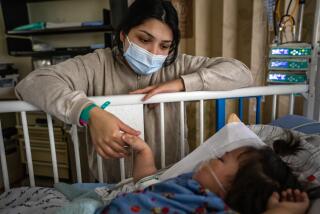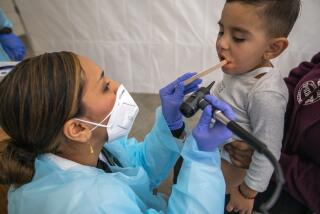CT scans in children on the rise
- Share via
CT scans have become almost routine in emergency rooms for both adults and children, and if you’ve wondered whether kids in particular are getting too much radiation, the answer might be yes.
Children are getting five times as many computerized tomography scans in the emergency room than they did in recent years, new research shows. The number of CT scans performed on children in pediatric emergency rooms increased from 330,000 in 1995 to 1.65 million in 2008, according to a study published online in Radiology.
It’s not that children are getting injured more often. The advent of more modern scanners is simply driving the imaging rate upwards, say the researchers. Abdominal CT scans, which deliver seven times as much radiation as head scans, were hardly used in 1995 but are now used in 15% to 21% of emergency visits, they point out.
RELATED: Clamping down on CT scans for kids
Few would deny that CT scans are first-rate diagnostic tools, but they rely on radiation -- and children are more vulnerable than adults to the risks of radiation. Their smaller organs are more sensitive to it and they have more years in which to develop cumulative radiation damage. After all, those medical doses can add up.
That’s not to say you should refuse a CT scan for your child for fear of cancer down the line—diagnosing trauma quickly could be the difference between life and death. It just means you should think twice before asking for, or agreeing to, a CT scan “just to be on the safe side.”
Here are a few questions to ask the doctor and yourself before your child gets a CT scan:
-- Is the test truly necessary? Are there alternate ways of diagnosing your child’s problem?
-- Is the scan a duplicate? Did the child already have the same type of scan at a different hospital or at an earlier time?
-- Will vulnerable areas such as eyes, thyroid, breasts and reproductive organs be irradiated? If so, can a different type of scan—such as an MRI—be performed instead?
-- Is the radiology department accredited by the American College of Radiology? Does it follow guidelines to lower radiation exposure for children?
-- Is the child likely to stay still during the scan? Squirming blurs the image, and having to take repeat images will expose the child to more radiation.
Perhaps the answers will point clearly to a “get the scan” decision. Perhaps not.
In any case, the study’s lead author, David Larson, says “special oversight” is required when doing CT scans on kids. As the director of quality improvement in the Department of Radiology at Cincinnati Children’s Hospital Medical Center in Ohio, he would know.






